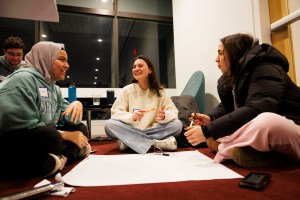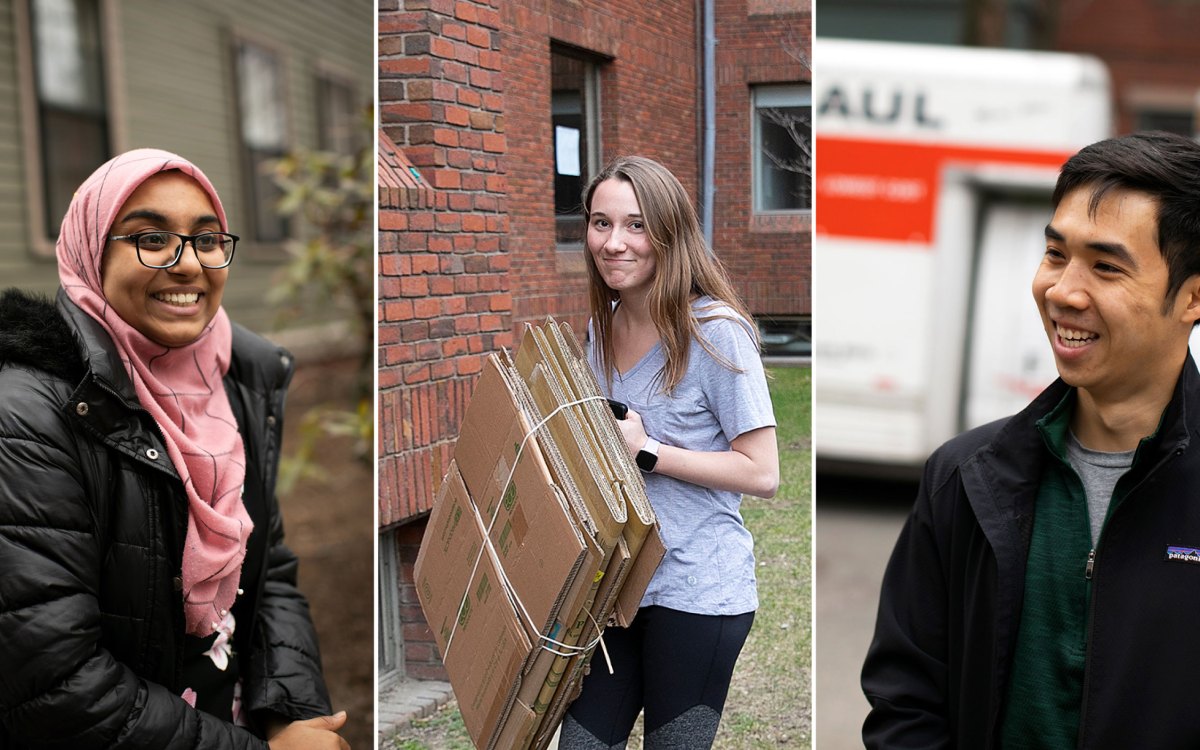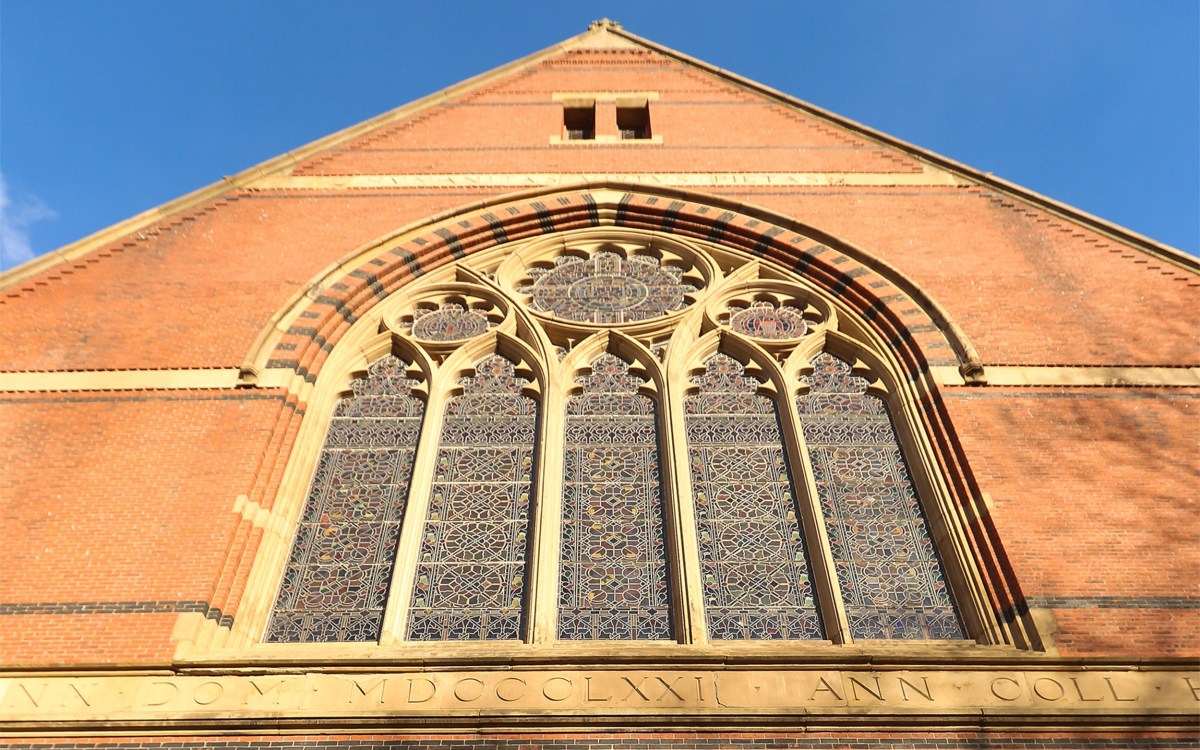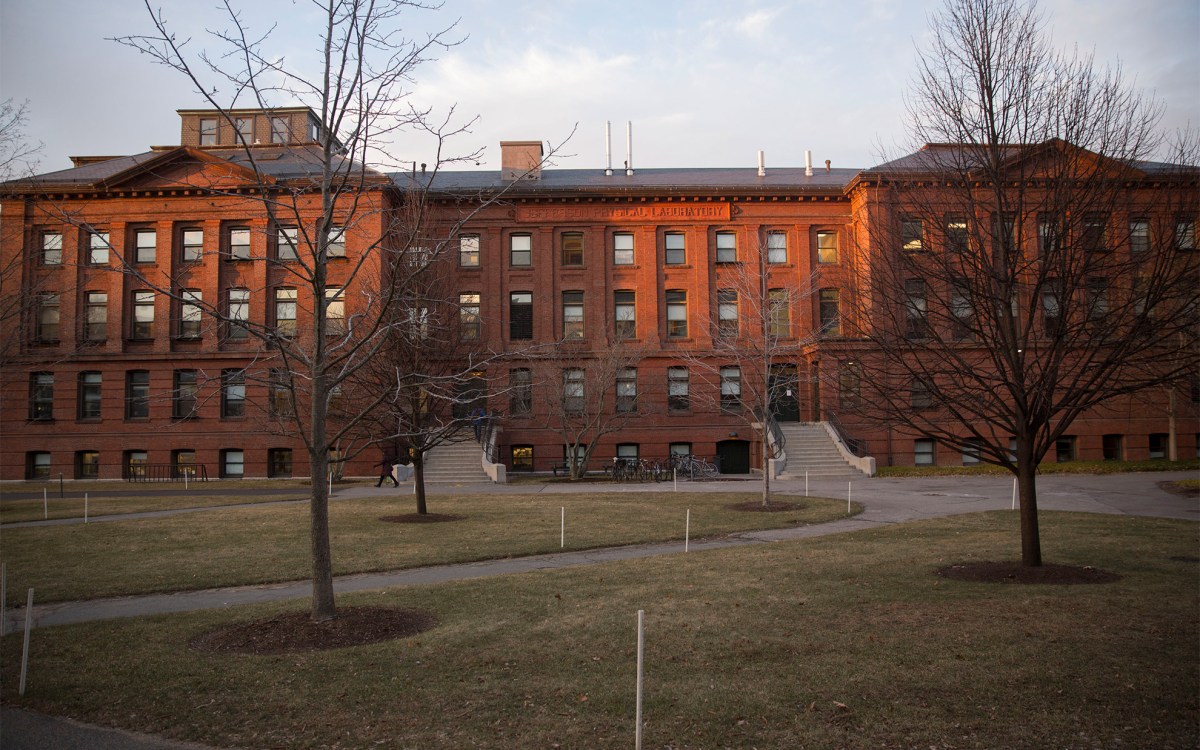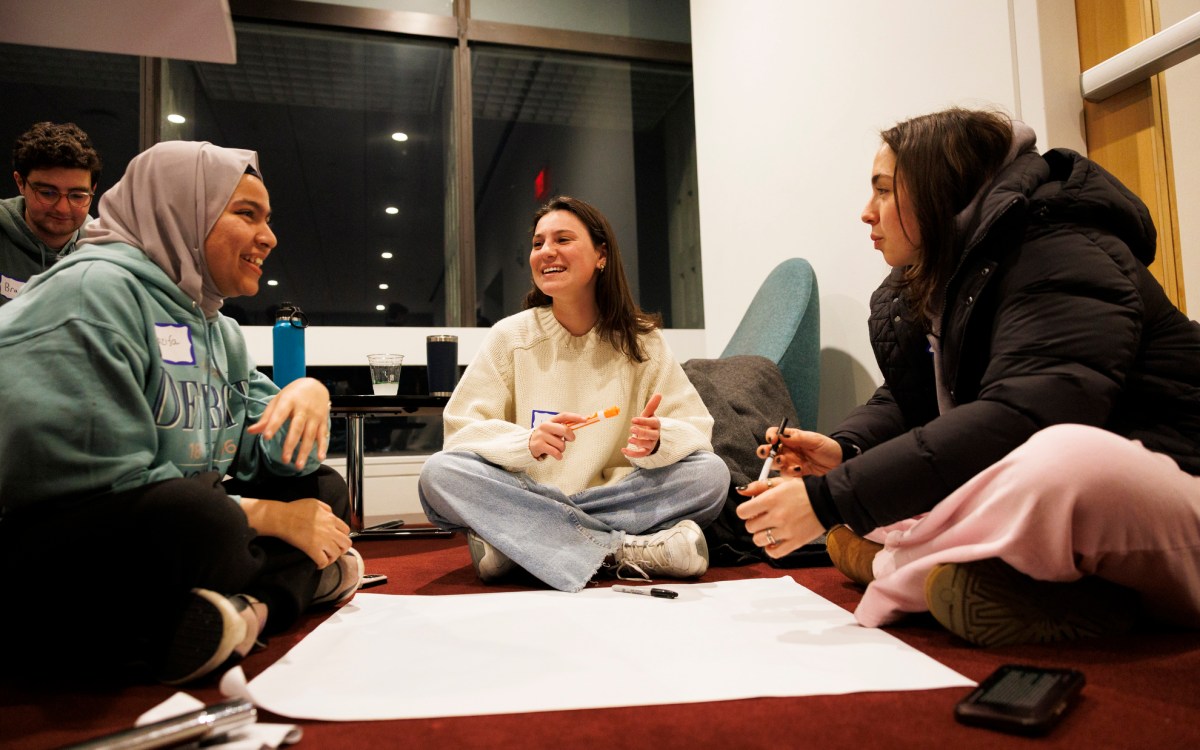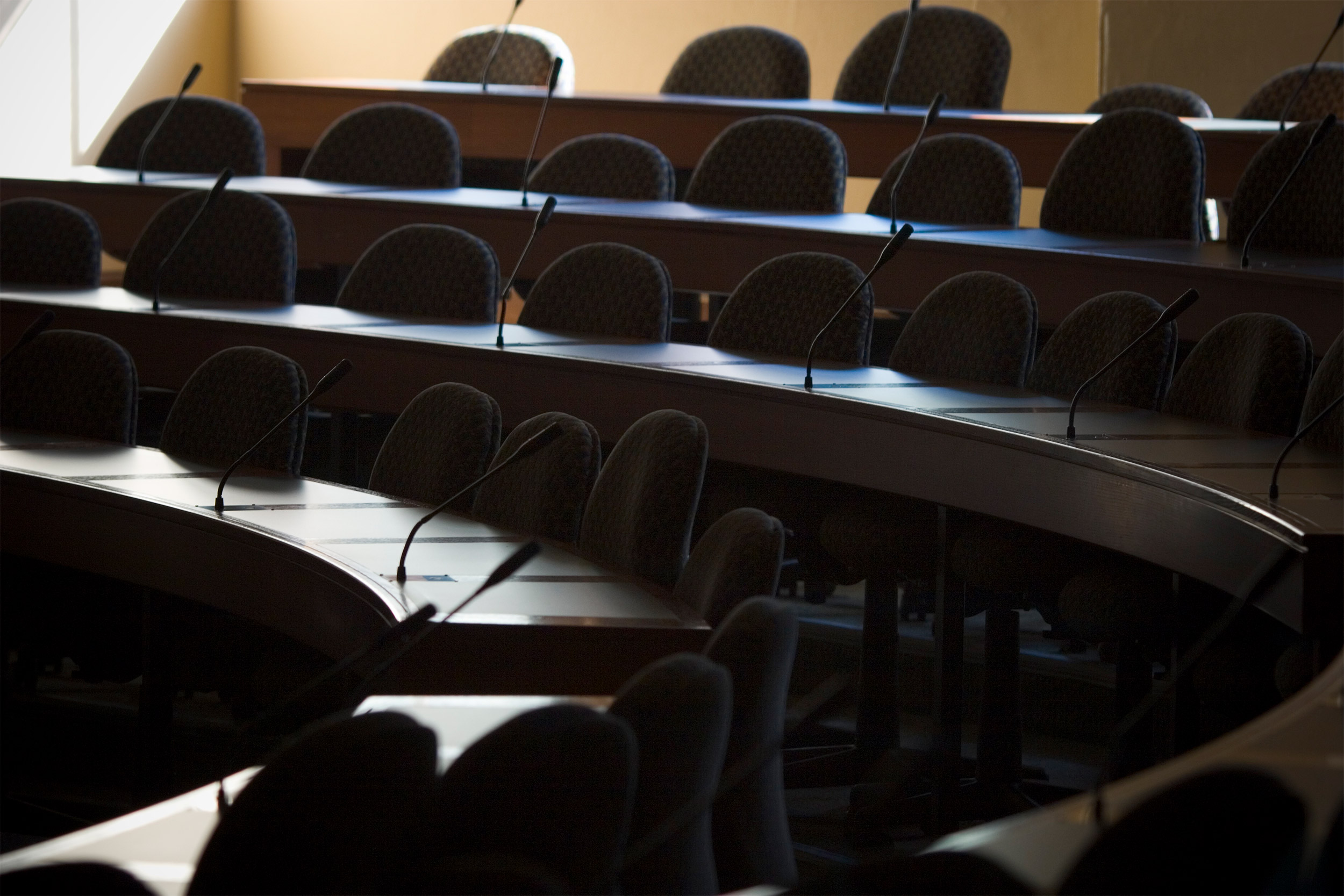
Harvard Law School classroom.
Harvard file photo
Zooming through the grad Schools
Though they vary in their missions, they report few serious problems and some pleasant surprises in the move to online learning
With more than a week of online classes behind them, professors at Harvard’s varied graduate and professional Schools generally agree that the move to virtual teaching was challenging but also full of pleasant surprises. For some, it was even a revelation.
“There is more participation online,” said Harvard Business School Professor Frances Frei, who co-teaches “Leading Difference” with Francesca Gino to sizable class of 120 students. In a post on LinkedIn, she wrote, “I’m not sure if the technology spurs it or if I was unintentionally stifling it in person, but it was very different. And awesome. And I commit to figuring out how to bring that back to the physical classroom.”
The differences went beyond “seeing people in their natural habitat,” with or without their dogs (which “sparked joy,” wrote Frei). Graduate and professional instructors rely more on traditional teaching models and hands-on courses than undergraduate professors do, and are often less likely to embrace an online approach. But after more than a week using the video conference platform Zoom, professors at some of the 12 postgraduate Schools said they were learning new pedagogical approaches.
“Hands-on and lab-based courses are perhaps the most difficult to transition online,” Bharat Anand, vice provost for advances in learning, said in an email exchange. “But it’s fair to say that Week 1 has been a real success. Sample responses from the graduate schools after day one were: ‘Today was a real success;’ ‘We’re feeling very optimistic about V-day’ (with V for virtual); and ‘We had a good day — which was our reasonable and not audacious goal.’
“To think that close to 100 percent of spring semester faculty have experienced online teaching in some form in the last week is astonishing. And, yes, all faculty and deans now know that Slack and Zoom are products, not just verbs.”
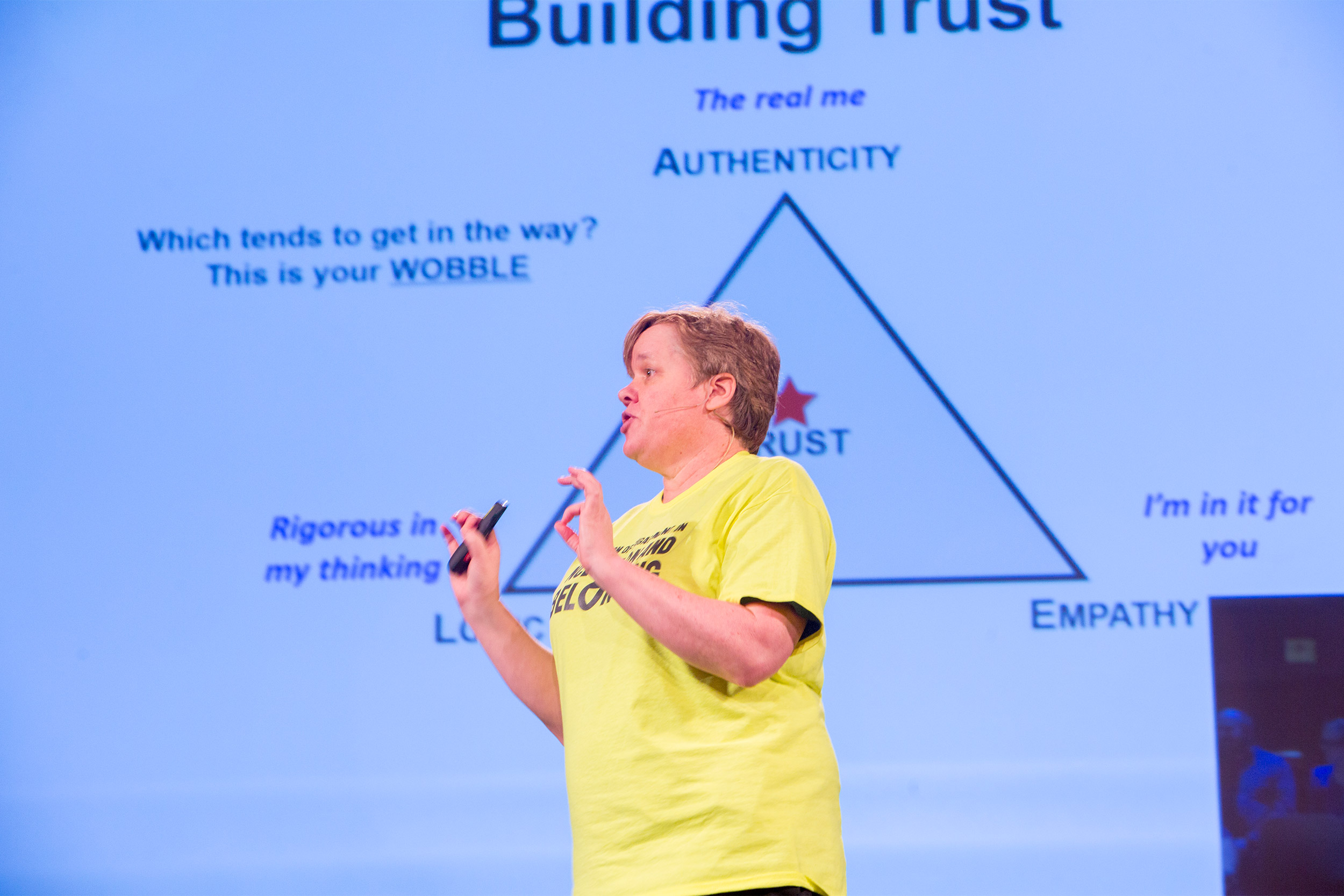
At the Harvard T.H. Chan School of Public Health, whose experts have been helping make sense of the novel coronavirus since mid-January, the crisis has felt close to home, and the shift to online classes was only a minor hiccup. In general, officials said the response has been upbeat, with some faculty praising the “intimacy” of classes on Zoom.
“There is a sense that we benefit from being a public school of health, with our faculty, teaching assistants, and students being able to leverage and incorporate the public health crisis into our remote teaching and learning,” said Todd Datz, managing director of media relations and public affairs.
The transition was also relatively smooth at Harvard Medical School (HMS) — not unexpectedly, given its five years of experience with “flipped classrooms,” an online format that lets instructors prepare their course material prior to their in-person classes. Students are expected to read, study, and research in advance, and come to small-group classes prepared. Edward M. Hundert, dean for medical education and the Daniel D. Federman M.D. Professor in Residence of Global Health and Social Medicine and Medical Education, said that adding Zoom to that formula has been a learning experience.
“Both students and faculty have been discovering all of its capabilities,” he said in an email. “Breakout groups and chat rooms are still enabling much of the small group, interactive pedagogy for which HMS is known. Some interesting new ideas have been developing, such as sorting small groups by time zone. It has been inspiring to see how students, faculty, and staff have all rallied to step up during this pandemic.”
The University’s other medical school, Harvard School of Dental Medicine, has had to redesign some hands-on courses, deferring practical sessions until students can have access to facilities where they can take radiographs and intra-oral photographs and practice oral exam techniques.
Samuel Coffin, an instructor in restorative dentistry and biomaterials sciences, has been busy doing individual Zoom and Facetime sessions and small tutorials with students, besides leading a larger virtual class at the Dental School and “Practice of Medicine” at HMS. Coffin is teaching role play to students who can no longer interview real patients in the hospital, and he said it’s all part of a learning process.
The other significant change that Coffin made was adjusting his class hours to accommodate his students, who are now spread across the country. To accommodate students living on the West Coast, his 8 a.m. class now starts at 10 a.m.
“I’m sure the East Coast students won’t complain if they can sleep in a bit,” he said.
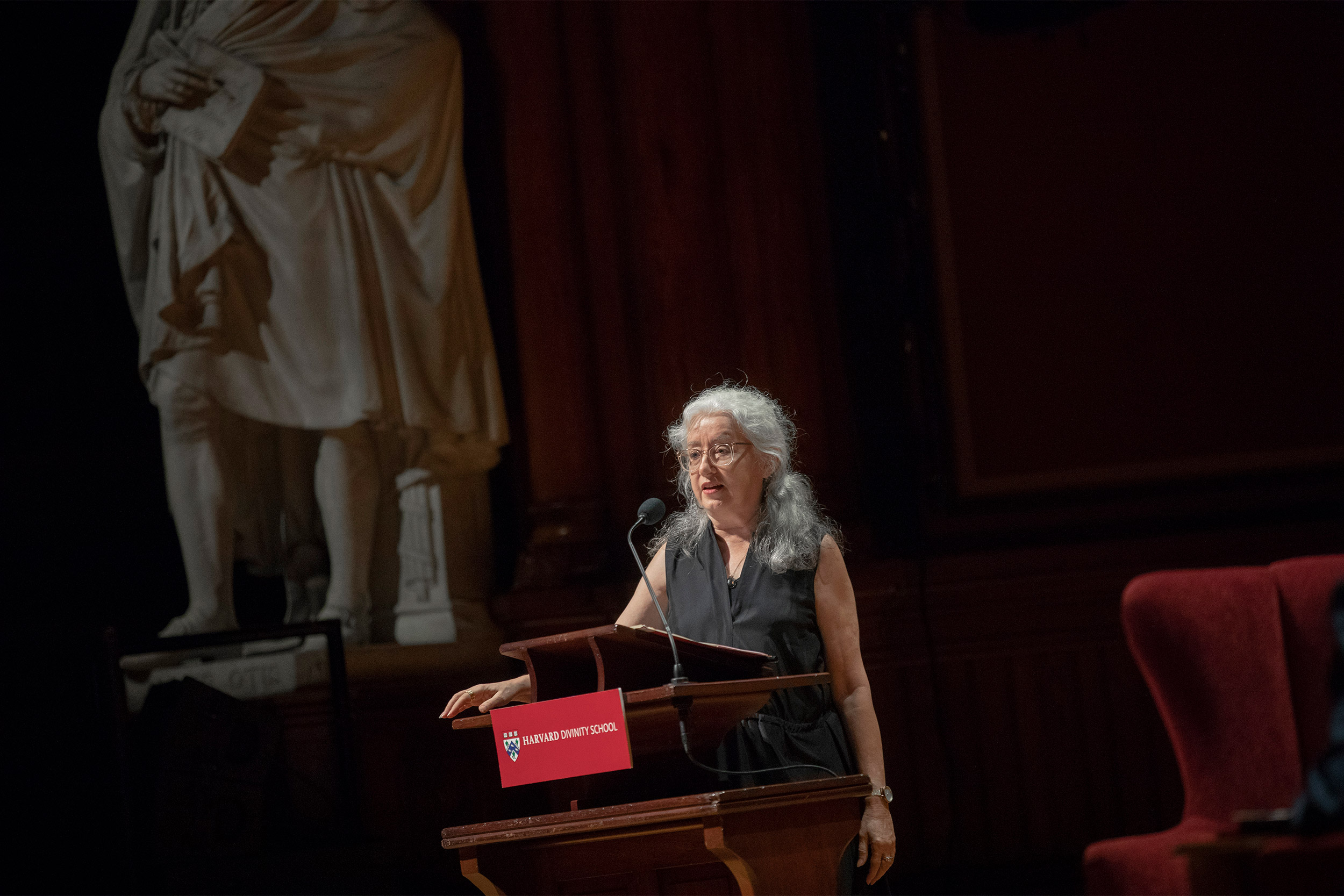
Coffin said the changes are a lesson in themselves. “From this also comes the experience of confronting the unexpected and learning how to overcome a significant obstacle. It may not seem so now, but our students may be stronger for having lived it,” he said in an email.
“While we may be doing things differently, we are still facilitating learning and focusing on the same skills. I believe that the silver lining to this dark cloud is that it has made us innovate. Some of these new teaching skills we will continue to utilize when the clouds have cleared.”
At Harvard Divinity School, remote classes are going well despite “some internet issues for some people and a couple of awkward moments,” said Janet Gyatso, Hershey Professor of Buddhist Studies and associate dean for faculty and academic affairs. Despite the School’s best efforts to translate its vibrant spiritual life to bits and bytes — “The classes are proceeding as close to normal as one could hope for under the circumstances. We’re all determined to finish the semester,” Gyatso said — some students feel a little unplugged.
“I’ve found the shift to online learning a bit difficult in the way that my focus isn’t what it is in a classroom,” said Odalis Garcia Gorra ’20, a master’s of theological studies candidate. “While my classes are obviously still interesting and the professors are doing the best job under the given circumstances, I do feel a bit disconnected. And sometimes after class I feel more tired than when we had classes in person, which is so strange and I wonder if that just has to do from the very sedentary lives we’re sort of all living at the moment.”
School officials are finding ways to bring the community together around worship services, prayer and meditation, and religious and spiritual gatherings via Zoom. Its Office of the Chaplain and Religious and Spiritual Life has created a list of spiritual resources for the community during the pandemic
“There has been a collective spirit of good will, enthusiasm, and dedication to finding solutions that will continue the mission of the School in light of the current impacts of the crisis,” said Daniel Hawkins, HDS chief information officer. “In a matter of weeks, the hard work and dedication of faculty and support staff has enabled us to implement a new purely online teaching model for the first time in our history.”
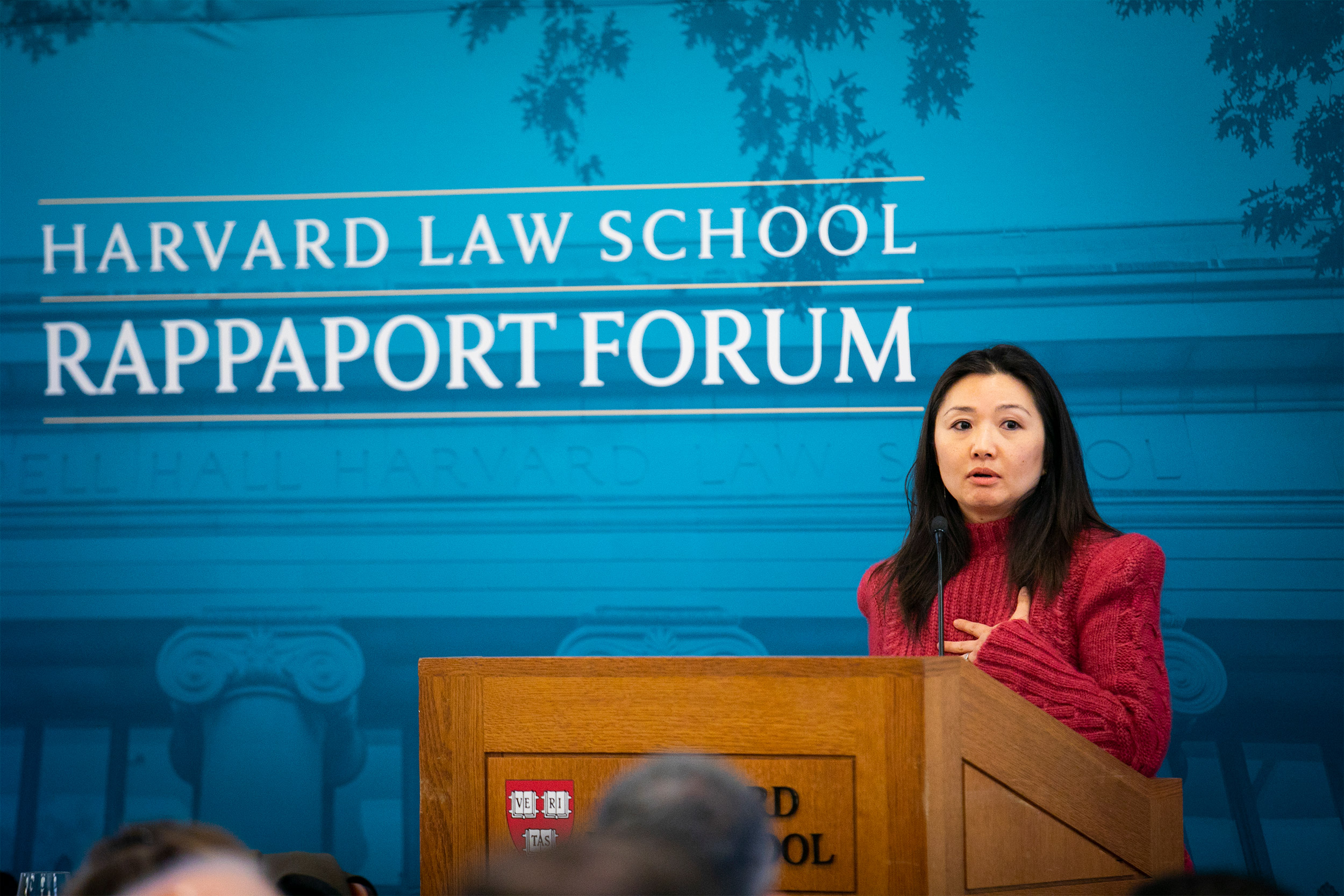
At the Harvard Law School, Professor Jeannie Suk Gersen said she found Zoom “highly compatible with Socratic teaching” and “more personable and less performative than standing at a podium at the front of a large lecture hall.” In an article at Harvard Law Today, Suk Gersen, the John H. Watson Professor of Law, said the platform makes it “easy to call on students” and promote their participation without giving them jitters. “Several students remarked afterward that their classmates seemed less nervous and more prepared while speaking on Zoom than in a large room of 115 students,” she said.
For HLS student Eric Winston, virtual classes have worked better than he expected despite some technical difficulties and the lack of personal interaction with classmates. “My professors have tried hard to maintain a classroom experience, and it is beginning to feel somewhat normal,” he said. “My favorite thing on Zoom is being transferred to small ‘breakout rooms;’ it feels like being teleported.”
At the Harvard Kennedy School, which held 48 online sessions on democracy, environmental economics, science in government, and other topics over spring break to get a jump on the transition to remote learning, the switch went without major issues, officials said. On the School’s website, Dan Levy, senior lecturer in public policy, said the early sessions aimed to “offer our students an opportunity to learn and continue to be intellectually and emotionally connected with the School” — and students said that was appreciated.
“By the end of the week, there was a sense of wanting to know what the new normal is versus the normal changing daily,” said Simon Borumand, who is pursuing a master’s in public policy. “Who you’re around is changing. Your routine is changing. Having faculty say, ‘We’ll meet you wherever you are’ … that really went a long way.”
At the Harvard Graduate School of Education, the shift to online learning has prompted — as befits an ed school — teaching innovations that have proven surprisingly meaningful. Within a week, the Teaching and Learning Lab, in partnership with the School’s Information Technology Department, created a panoply of resources to guide faculty in moving online, including a remote teaching hub with detailed guidance on everything from mastering the technology to collaborating with teacher teams to building a welcoming and inclusive online community. Faculty have been experimenting with fresh techniques, such as using music playlists to set the mood as students enter classes, or providing interactive and social time at the beginning and end of classes, sharing Zoom backgrounds, and connecting in ways that feel intimate. With no “front row/back row” dynamic in Zoom learning, faculty say that class participation has been rich, and students are creating their own collaborations.
“I have found the transition to online learning and to Zoom very positive on balance.” said Fernando Reimers, Ford Foundation Professor of Practice in International Education “What I most like is the ability to seamlessly integrate instruction and whole-class discussion, breakout room discussions, and the use of the chat facility. I also think it is empowering to students to be on a level playing field with faculty in adjusting to the new technology. They’ve seen me at the beginning of the class asking them for help in finding the breakout button, and I’ve been ending classes asking them for advice on how to make the classes better, which they provided in the chat.”
Focusing on preserving and strengthening bonds while working remotely, a group of HGSE deans, faculty, students, and staff have convened Team Connect. The portal has launched a weekly crowd-sourced video series, is sponsoring Ask Me Anything projects across the School, and will host the signature community story-telling series Double Take.
In addition, the School has created a rapidly expanding online series as a hub for guidance and strategies on how education leaders, schools, and families can respond to change, build resilience, and learn and thrive at home. HGSE masters’ students have been switching plans and devoting their culminating projects to developing ways to help. In addition, HGSE and Associate Professor Sarah Dryden-Peterson have launched a daily children’s series called Books of Belonging, in which Dryden-Peterson reads titles to give educators and families a way to help children process their feelings and worries. She plans to reach out to other faculty to join her as readers. The series is posting daily on Facebook and YouTube.
For the Harvard Graduate School of Design, the physical nature of design work and education — much of which relies on solid, three-dimensional models and prototypes — poses a fundamental challenge amid the virtual transition. Among other considerations, Dean Sarah M. Whiting and faculty are considering how traditional “final review” panels might be translated to a purely digital setting. For now, rather than physically pinning-up printouts of project renderings, professors and students are creating virtual pin-up boards, enabling them to review work on one screen and conduct a Zoom conversation or critique on the other.
Despite structural shifts in instruction, many faculty have found the move to online tools such as Zoom and GoToMeeting to be remarkably smooth, if not laden with unanticipated benefits.
“Digital teaching has been surprisingly intimate, engaging, and interactive,” said Eric Höweler, associate professor of architecture. “When I lecture in Gund Hall’s Piper Auditorium, I have a class of 70 students, and I have a hard time seeing their facial expressions and don’t always know their names. Now, on Zoom, I can pick up on every smile, smirk, and eye-roll. Plus, I see names at the bottom of their screens, so I’m getting to know their names, which typically doesn’t happen in a lecture course.”
A pair of master in design studies candidates even created an assortment of colorful Zoom backgrounds derived from spaces in and around Gund Hall, including several starring Harvard’s famed Remy the Humanities Cat.


